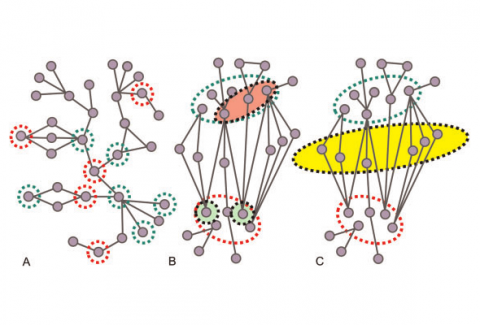Using neighborhood cohesiveness to infer interactions between protein domains

Segura J, Sorzano COS, Cuenca-Alba J, Aloy P, Carazo JM, Motivation: In recent years, large-scale studies have been undertaken to describe, at least partially, protein-protein interaction maps, or interactomes, for a number of relevant organisms, including human. However, current interactomes provide a somehow limited picture of the molecular details involving protein interactions, mostly because essential experimental information, especially structural data, is lacking. Indeed, the gap between structural and interactomics information is enlarging and thus, for most interactions, key experimental information is missing. We elaborate on the observation that many interactions between proteins involve a pair of their constituent domains and, thus, the knowledge of how protein domains interact adds very significant information to any interactomic analysis.
Bioinformatics,
2015, 1-8
Results: In this work, we describe a novel use of the neighborhood cohesiveness property to infer interactions between protein domains given a protein interaction network. We have shown that some clustering coefficients can be extended to measure a degree of cohesiveness between two sets of nodes within a network. Specifically, we used the meet/min coefficient to measure the proportion of interacting nodes between two sets of nodes and the fraction of common neighbors. This approach extends previous works where homolog coefficients were first defined around network nodes and later around edges. The proposed approach substantially increases both the number of predicted domain-domain interactions as well as its accuracy as compared with current methods.
Pubmed: 25838464
Direct link: 10.1093/bioinformatics/btv188
